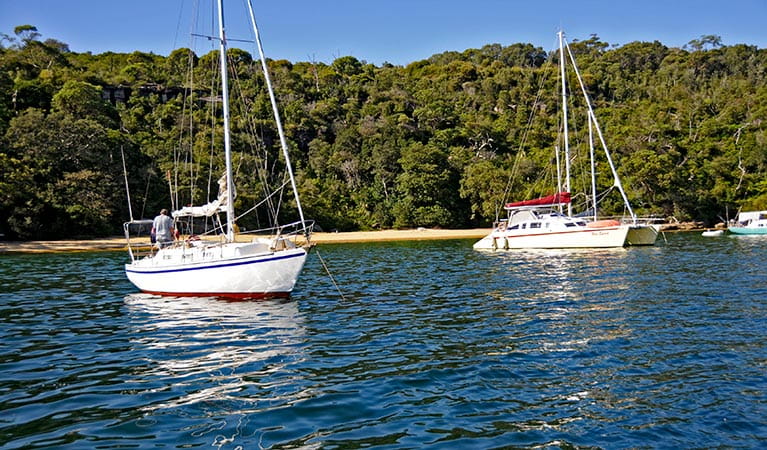Paddling and boating safety
It’s great to get out on your boat for a day of fishing, some water skiing, a paddle on a kayak or canoe or just to relax and take in the scenery. Keep yourself and your passengers safe when kayaking, canoeing or boating.
Read more about Paddling and boating safety
Please note there are strict rules which govern boating safety in NSW. These rules and other valuable safety advice can be found in the NSW Roads and Maritime Service’s Boating Handbook.
Plan your trip
- Whether you have a kayak, personal water craft, sail or power boat, you must know the rules, have the right equipment and be a responsible skipper.
- Check the marine and ocean weather forecast, tidal information and wave report before heading out.
- Check if there are any park alerts or closures before you go.
- Boats must observe appropriate distances between vessels and marine mammals (whales, dolphins and dugongs).
Tell somebody
Tell someone where you’re going, how many people are on board, your vessel details and when you will return.
Give your route details to family and friends who are not with you. Tell them when you expect to return and let them know when you have returned. For longer trips, consider filling in a trip intention form.
What to bring
- Drinking water. At least 2L per person.
- Safety, communication and navigational equipment as specified in the Boating Handbook. What you need will vary depending on your watercraft and the waterway you are visiting.
What to wear
- All safety equipment as recommended in the Boating Handbook.
- Plan for all weather conditions. Be prepared for both cold and windy and hot sunny conditions.
- A hat that fits properly and with a draw cord so it doesn’t blow away.
- Sunscreen and sunglasses.
- Warm clothing and wet weather gear.
- Choose appropriate footwear.
- Paddlers should wear bright clothing to be seen.
- Lifejackets—refer to the Boating Handbook for requirements.
Courtesy on the boat ramp
- Prepare your boat away from the ramp.
- Don’t jump the line of those others waiting to launch or load.
- Clear the ramp area and the wash-down rack as quickly and safely as possible. Never use the launch ramp lanes to secure your boat for the ride home.
In the water
- If you capsize, stay with your vessel. A vessel is much easier to spot in the water than a person.
- Beware of trees and snags, like submerged logs or tree roots.
- Look out for swimmers and other water users.
- To avoid losing your paddles, attach them to your vessel with shock cords.
Where possible, always paddle in a group to maximise your safety.




